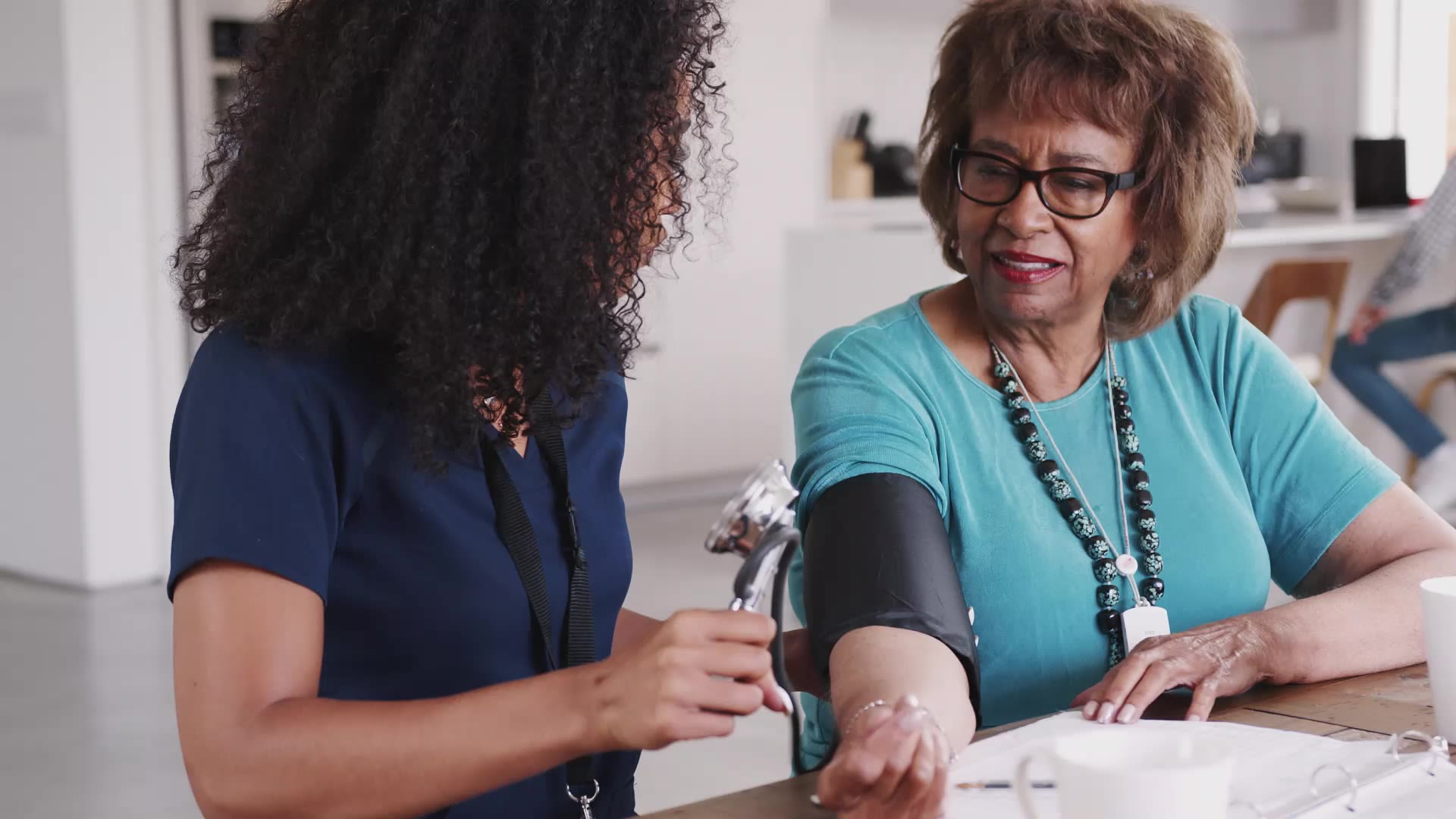Dial down the pressure

Life doesn’t come with a crystal ball. But getting a blood pressure check can be a window into your risk of developing heart disease and stroke - two of the biggest killers of women in Australia.
High blood pressure can creep up silently without symptoms, but getting it checked is as simple as rolling up your sleeve.

Associate Professor Sarah Zaman, a women’s heart health specialist (cardiologist), says women need to know that they are much more likely to die of heart disease than breast cancer. And blood pressure plays a crucial role.
“High blood pressure is the number one risk factor for women,” she says. “Getting it monitored and controlled will go a long way to preventing heart attacks and strokes.”
According to the Stroke Foundation, the number of strokes would be almost cut in half if high blood pressure alone was eliminated.
The silent killer
Most women with high blood pressure will not be aware they have it. This is what makes getting regular checks so important. “It’s a silent killer in that there are usually no symptoms,” explains Associate Professor Zaman, Academic Interventional Cardiologist at the University of Sydney and Westmead Hospital.
“You can’t feel blood pressure [if it’s normal or high]. But when it is extremely high, you may experience headaches, fainting, or stroke.”
Blood pressure basics
Each time your heart beats, it pumps blood into your arteries, delivering the supplies needed to keep your organs and muscles working.

Blood pressure is the measure of how hard your body must work to pump blood around your body. The higher your blood pressure, the harder your heart is pushing.
Blood pressure is recorded as two numbers, such as 120/80. The first number measures the pressure in your arteries when your heart contracts and pushes blood out – this is known as ‘systolic pressure’. The second number measures the pressure in your arteries when your heart relaxes – this is known as ‘diastolic pressure’. Both numbers are important.
“An ideal reading would be 120/80,” says Dr Tessa King, a Jean Hailes GP.
Blood pressure is considered high if the reading is 140/90 or above. A reading of 130/85 or above is considered early stage high blood pressure, or what’s known as ‘high-normal’.
High blood pressure is also called ‘hypertension’.
Risky business
Dr King says several factors contribute to high blood pressure. They include being overweight, being postmenopausal, not exercising, drinking too much, eating too much salt or having a family history of high blood pressure.
As you grow older, you are at greater risk of high blood pressure because your arteries become stiffer.
Women who had high blood pressure during pregnancy have an eight- to 10-fold higher risk of developing high blood pressure during their lifetime, says Associate Professor Zaman.
As you grow older, you are at greater risk of high blood pressure because your arteries become stiffer. Your risk of heart disease also increases after menopause, so blood pressure checks become particularly important at this life stage and beyond.

Tests and timings
Your GP can include a blood pressure test during a routine consultation. It can also be done at your local pharmacy (bookings may be required and fees may apply). Dr King says it’s best to sit and relax for five minutes before the test.
She says that from the age of 18, blood pressure checks are recommended at least every two years. More frequent checks are needed if you have had high blood pressure in the past or have risk factors like diabetes, being overweight, smoking, or having a family history of high blood pressure.
“If you are aged over 50 or postmenopausal, regular checks are crucial.”
Associate Professor Zaman says that as you get older, your blood pressure checks should become more frequent. “If you are aged over 50 or postmenopausal, regular checks are crucial.” For many women this may mean annual checks, but everyone’s risk is different, so speak to your doctor about what’s right for you.
Women who have had gestational diabetes or high blood pressure during pregnancy are recommended to have more frequent checks too – usually every six to 12 months – for the rest of their lives.
Action stations
Associate Professor Zaman urges all women to become familiar with their blood pressure readings.
If you have high blood pressure, it’s important to take action and get it controlled. Your doctor may prescribe medication and suggest healthy lifestyle changes such as getting more exercise, drinking less alcohol and losing weight.
There are several diets including the DASH diet and Mediterranean diet that may be helpful, alongside choosing healthy fats (nuts, seeds, avocados, olive oil) and using salt replacements, says Associate Professor Zaman. “You also need to stop smoking,” she adds. “It’s a big driver of high blood pressure.”
So if you’re due for your next blood pressure check or you can’t remember when it was last checked, what are you waiting for? Women’s Health Week is the perfect time to focus on these lifesaving health checks. It really is as simple as rolling up your sleeve.

© 2023 Jean Hailes Foundation. All rights reserved. This publication may not be reproduced in whole or in part by any means without written permission of the copyright owner. Contact: licensing@jeanhailes.org.au
Words by Muriel Reddy. Illustrations by Tam Bower.
Published September 2023
This article is designed to be informative and educational. It is not intended to provide specific medical advice or replace advice from your medical practitioner.
Jean Hailes for Women’s Health gratefully acknowledges the support of the Australian Government.
